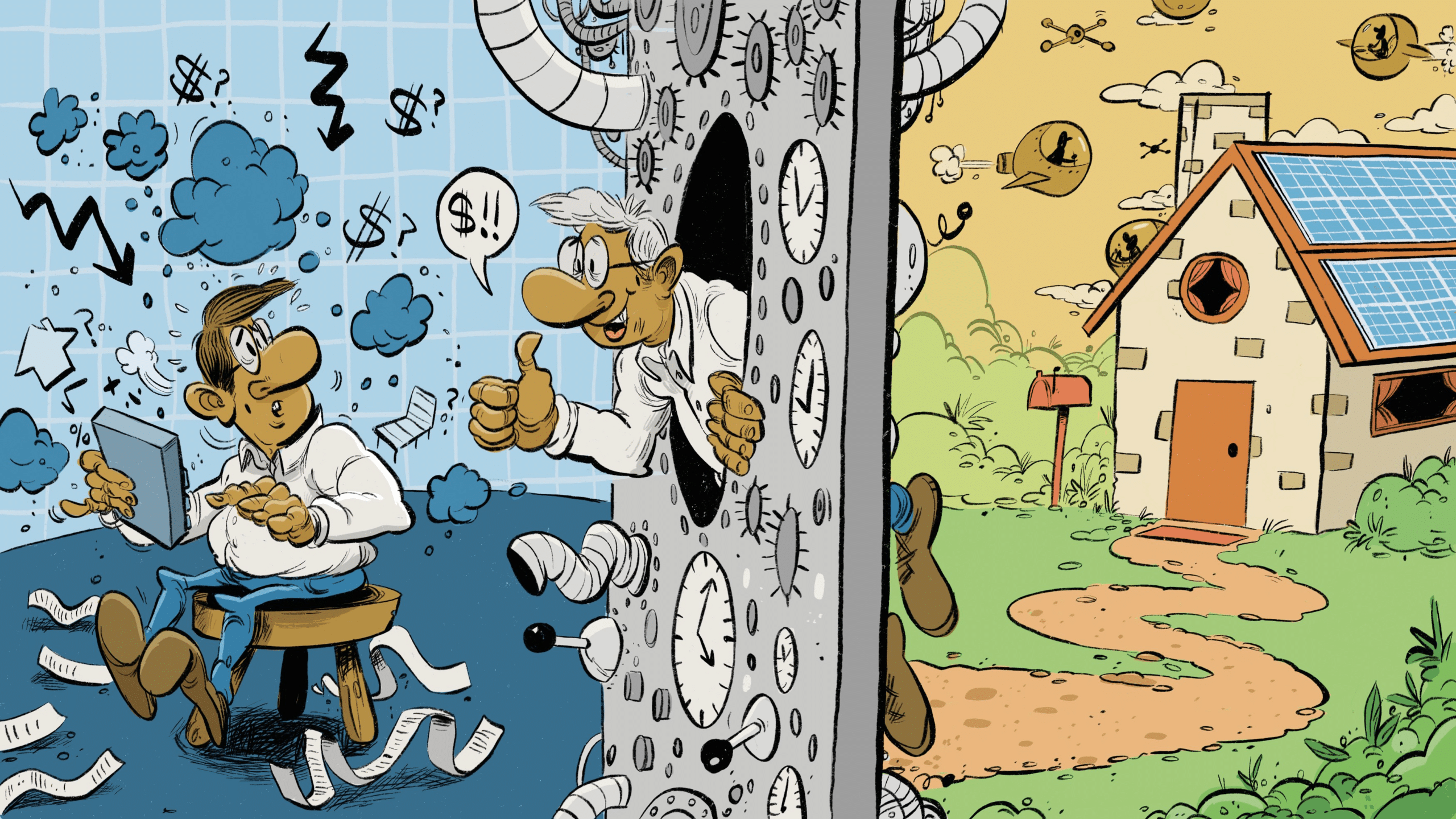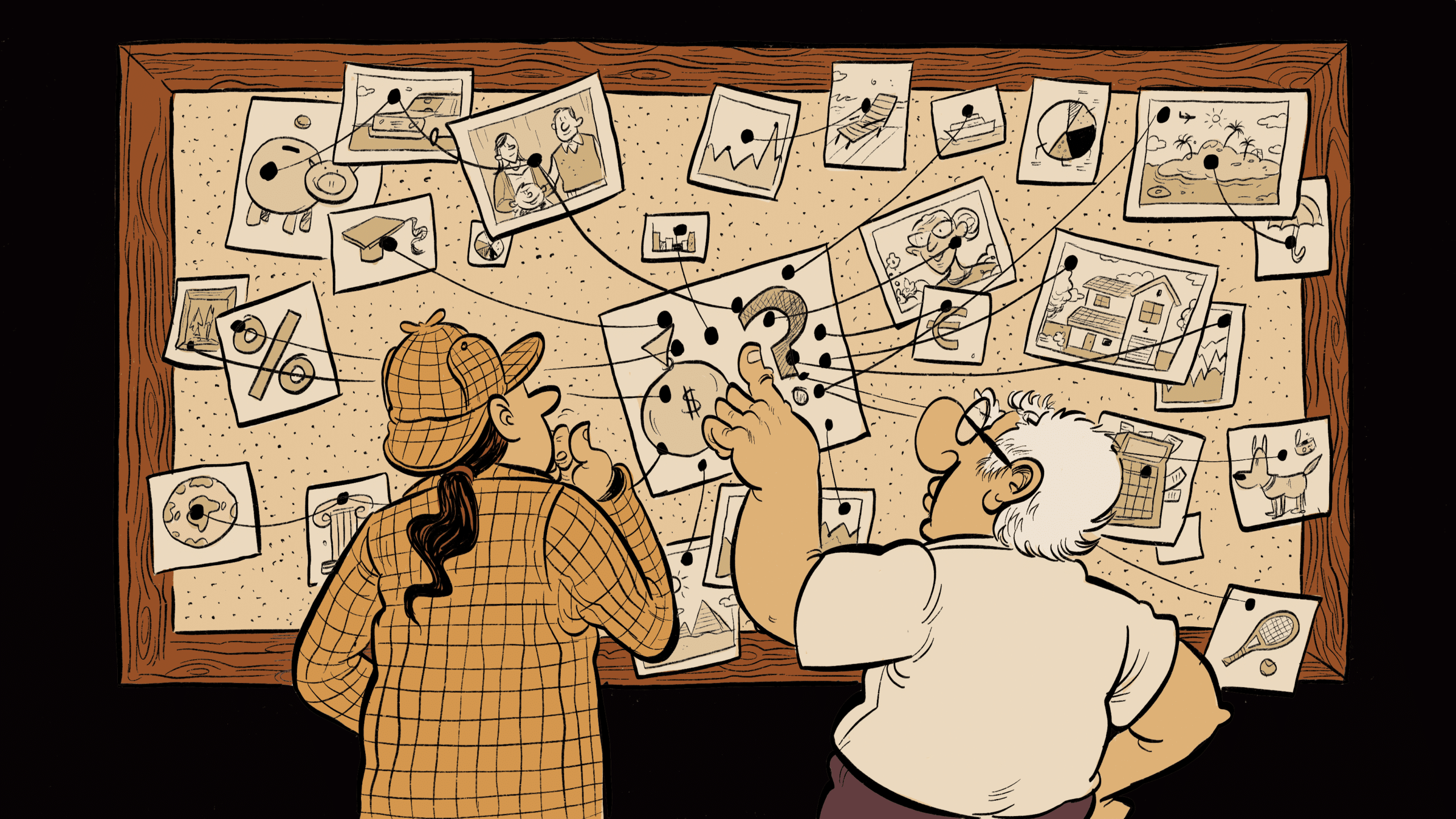
Your future called: Can your RRSP help ease retirement anxiety?
While 2024 could feel like another tough year for some, investing in an RRSP is one way to make a positive impact on your finances today while socking away benefits to reap in retirement.
If you’ve been feeling anxious about how much you’re saving for retirement, you’re not alone. A recent TD survey found 43% of Canadians are not confident they can retire as planned. Nearly three-quarters of respondents cited the rising cost of living as a stumbling block to achieving their financial goals, causing almost half to say they wouldn’t contribute to their retirement savings this tax year.1
“That reaction is completely understandable,” says Varun Bhagwat, Senior Financial Planner, TD Wealth. “But if people consider their long-term goals and think about dealing with the current economic situation, they’ll see that contributing now could be a more effective way of achieving what they want in retirement.”
In fact, Bhagwat says that the high cost of living and rising mortgage payments are exactly the reasons why people should consider contributing to their Registered Retirement Savings Plan (RRSP): Growing lifestyle expenditures in the future mean people need to save now to meet those financial challenges later. The short-term economic shocks are nasty but a well-rounded financial and investment plan can help to insulate you.
As well, missing an opportunity to contribute to your RRSP in one year means skipping out on potential investment growth and it could be difficult to make that money back in other years, he says.
Bhagwat makes the case for dealing with financial worries head on and managing your retirement plan proactively with RRSPs as your foundation.
Determine what you need
Before you start planning how best to use your RRSP, you may want to figure out how much you need to save to reach your goals. To start, a financial advisor can help you add up your expenses to see how much you’re likely to spend in retirement. But first there are decisions to be made and future goals to think about.
Your upcoming retirement lifestyle is contingent on what you want to do once you stop working: Those options (and the expenses attached) are broad, from puttering in the garden to running a small business. If you don’t make future plans (or at least start thinking about your plans), you won’t really know what kind of money you should be saving, says Bhagwat.
Apart from planning what you would like to do, many people now have family obligations which will follow them into retirement, whether its supporting adult children or housing older relatives. Other factors to consider include the age you retire (later or earlier than 65?) and how long you think you might live (we’re living longer and are healthier).2
There are also an abundance of questions a planner or advisor can answer outside of investments. They can be when it makes sense in your circumstances to take your Canada Pension Plan (CPP), your Old Age Security (OAS) or a corporate pension. You may also have tax or estate planning concerns. A financial planner or advisor can help determine not only how much you should be contributing to your RRSP but also what other strategies you should be undertaking.
Building flexibility into your plan
As the popular saying goes, “Life is what happens while you’re busy making other plans.” In other words, what you think your retirement might look like could be different from what unfolds. Those surprises can include suddenly gaining or losing income, having a health problem, deciding to move closer to your grandkids, or even picking up some employment that is fulfilling and enjoyable.
That’s all to say that your plan should be re-evaluated at least annually with your planner or advisor to take into account the changes in your life which you have control over, external circumstances like tax changes that you have to adapt to and emergency situations (think COVID-19) which are unforeseen.
“
What you think your retirement might look like could be different from what unfolds.
”
The RRSP itself offers flexibility, too. The maximum annual contribution limit is 18% of your earned income (with certain limits) so that if you have a large bonus, commission or have received an inheritance, stowing those funds into investments within your RRSP can be manageable.
Creating a flexible plan can be critical, says Bhagwat. That means one that is capable of rolling with the punches of a volatile market. “I have yet to come across a client who was not able to meet their long-term goals because we had one year where markets dropped and inflation went up,” Bhagwat notes.
Why an RRSP can be the foundation for your savings plan
The ability to lower your annual net income and receive a tax refund may be the main selling point of an RRSP for many people: Let’s face it, getting a sizable cheque from the government is always gratifying (even if we secretly know that it’s actually our own money, just held back).
But the main benefit is that the compounding interest of the investments within the RRSP can be the foundation of your retirement plan: It’s a large contributing factor to your lifestyle as you reach retirement age. If you’re young, retirement is so far away that the considerations and worries of that time seem small. In fact, your RRSP may also seem puny … at first. But with regular contributions and the power of compounding over time, it can accumulate (tax-deferred) so that when retirement time comes, you may have a sizable nest egg.
Another benefit: RRSPs offer couples the option to split their income and lower their overall tax bill with a spousal RRSP account. This allows the higher-earning partner to contribute to the lower-earning partner’s retirement savings while deducting the contribution from their own taxable income.
Most financial institutions make it easy for you to automatically direct a certain portion of each paycheque into your RRSP, something you can easily set on your investing account or with your advisor. Automatic contributions make it much easier to save no matter what else is happening around you. Your investments will also have more time to grow than if you delay until the contribution deadline, he adds. “If you pay yourself first, you aren’t tempted to spend that money,” says Bhagwat.
Why working with an advisor can be helpful
If you don’t already have an advisor, it might be time to get one. A financial planner can update your plan to reflect your current asset base, income and expenses, and project how that translates into income in retirement, as well as help you decide when it’s best to retire. “Unless you put this on paper and input the actual numbers, you can’t say whether you’re going to be OK or not,” Bhagwat says.
A planner can also offer solutions tailored to your circumstances. They can ensure your asset allocation remains consistent with your risk tolerance and rebalance your investments periodically. Such expert guidance could help stabilize your financial outlook when inflation or market volatility happens.
When you have a plan in place and investments in an RRSP, your retirement savings are prepared if a financial storm hits.
“People are a little more nervous today about meeting their long-term goals, and this is mainly due to rising inflation and volatility in investment markets,” says Bhagwat. “But these are exactly the moments when you have to make a sound plan and pay attention to it.”
MICHAEL MCCULLOUGH
MONEYTALK
ILLUSTRATION
DANESH MOHIUDDIN
- 43% of Canadians are not confident they will be able to retire when they initially planned: TD Survey, TD Media Room, Dec. 5, 2023, accessed Jan. 21, 2024, td.mediaroom.com/2023-12-05-43-of-Canadians-are-not-confident-they-will-be-able-to-retire-when-they-initially-planned-TD-Survey ↩
- Health of Canadians, Statisitics Canada, Sept. 13, 2023, acessed Jan. 23, 2024, www150.statcan.gc.ca/n1/pub/82-570-x/82-570-x2023001-eng.htm ↩
















